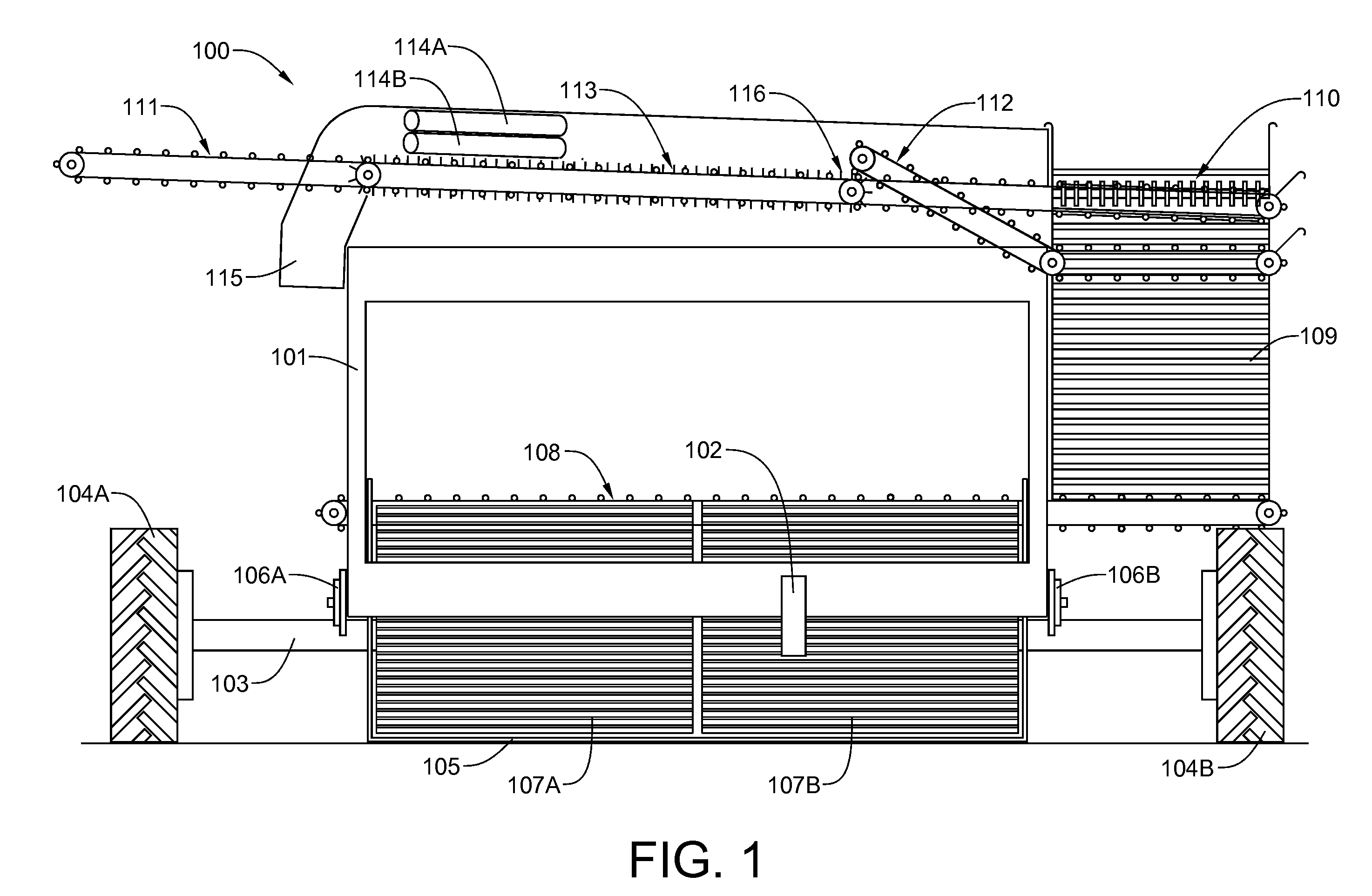Cleaning and separation system for tubers
a technology for cleaning and separation of tubers, which is applied in the direction of sorting, solid separation, agriculture tools and machines, etc., can solve the problems that tubers cannot be accurately referred to as root crops, and the tuber cannot be accurately referred to as tubers, so as to simplify the description of the process and facilitate the cleaning
- Summary
- Abstract
- Description
- Claims
- Application Information
AI Technical Summary
Benefits of technology
Problems solved by technology
Method used
Image
Examples
Embodiment Construction
[0026]The method and apparatus of the present invention will now be described with reference to the attached drawing figures. It should be understood that the drawings are not drawn to scale and that many details of actual harvester construction have been omitted in the interest of simplicity and clarity. The drawings are more schematic than mechanical in nature, and are meant to be merely illustrative of the various aspects of the invention.
[0027]Referring now to FIG. 1, a typical four-row tuber, or ground fruit, harvester 100, which is seen in a front view, includes: a main frame 101 to which is secured a tractor hitch 102; an axle 103 that is secured to the main frame 101; wheels 104A and 104B rotatably secured to opposite ends of the axle 103; a blade 105 that is pivotally mounted to the main frame 101 at pivots 106A and 106B; a pair of digger belted chains 107A and 107B, which transport ground fruits unearthed by the blade 105 to a transverse conveyor 108 at the rear of the har...
PUM
 Login to View More
Login to View More Abstract
Description
Claims
Application Information
 Login to View More
Login to View More - R&D
- Intellectual Property
- Life Sciences
- Materials
- Tech Scout
- Unparalleled Data Quality
- Higher Quality Content
- 60% Fewer Hallucinations
Browse by: Latest US Patents, China's latest patents, Technical Efficacy Thesaurus, Application Domain, Technology Topic, Popular Technical Reports.
© 2025 PatSnap. All rights reserved.Legal|Privacy policy|Modern Slavery Act Transparency Statement|Sitemap|About US| Contact US: help@patsnap.com



